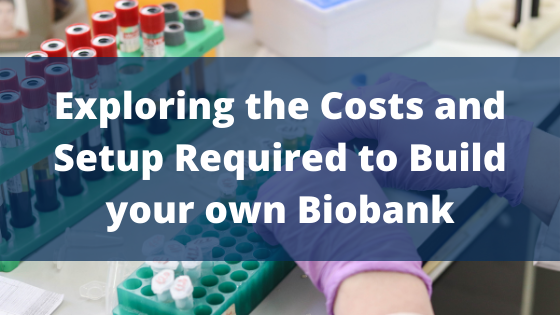The storage of biomaterials from DNA and RNA to hair and fingernails has numerous benefits. The most obvious is that patients do not have to repeatedly donate samples, which can be vital if those samples are collected from organs. Additionally, those samples that are finite such as primary cells from a diseased brain, can be stored safely for future use when additional equipment and/or research techniques can be employed to generate more data.

However, building a biobank is complex and varies for every organization. Read this article discusses various issues while building a biobank which includes –
- How much space do I need?
- Which type of freezer or liquid nitrogen tanks should I use?
- What are the costs involved in running my own biobank?
- What are the staff and compliance costs of storing my biosamples?
- Why outsourcing sample storage could be right for you
